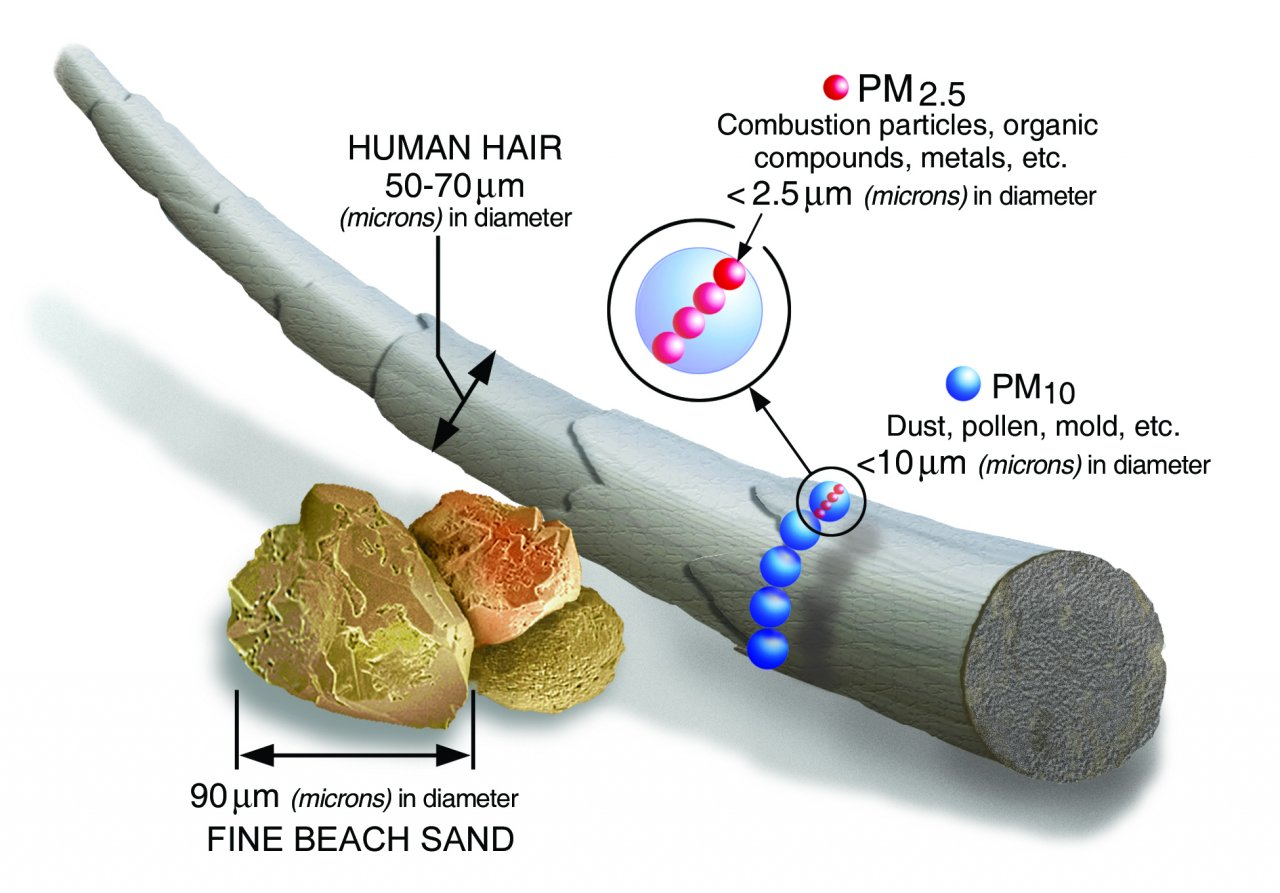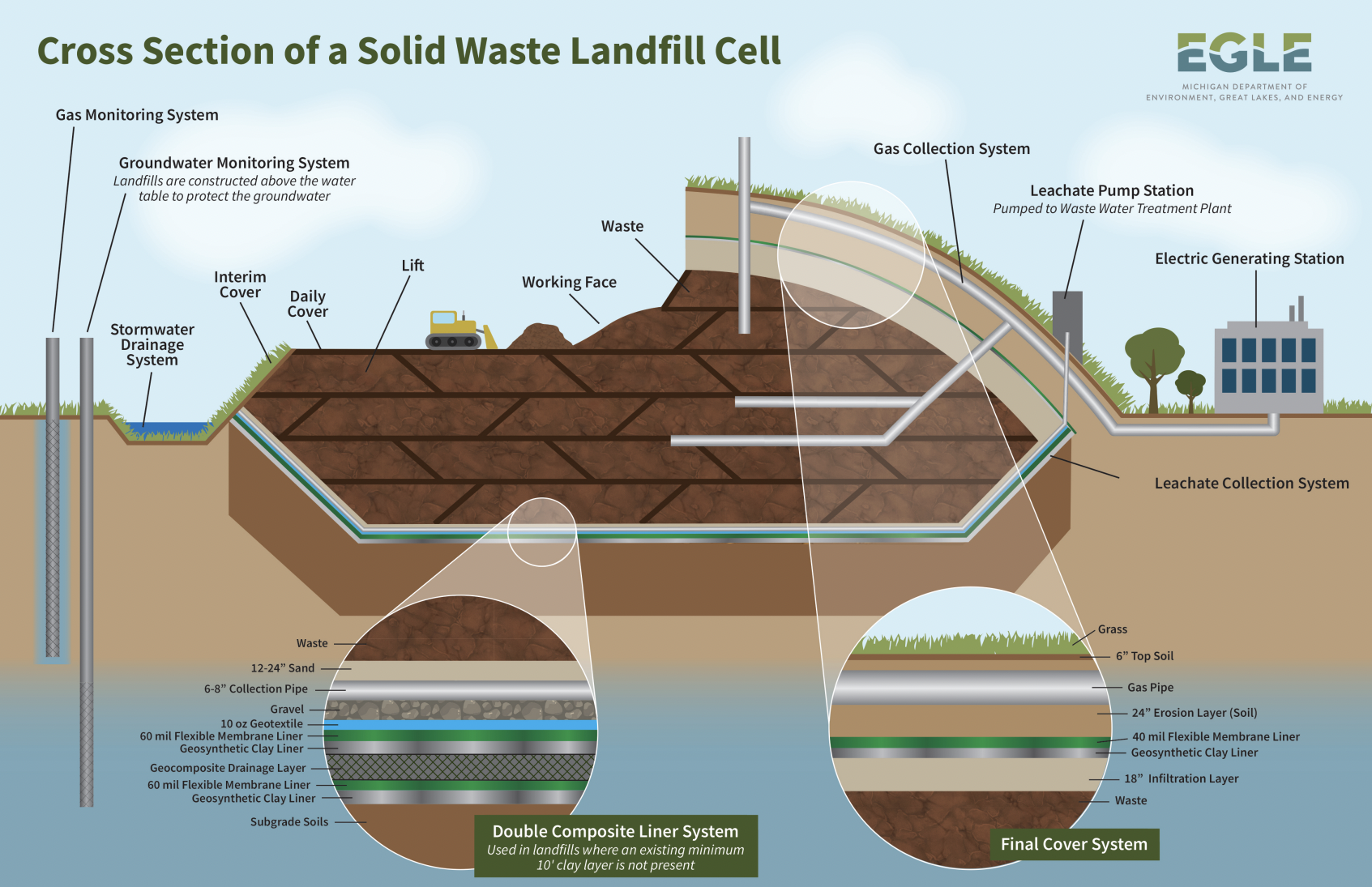Pollution, a critical environmental issue, manifests in various forms, each impacting ecosystems, human health, and the planet's overall well-being. This section delves into the four primary pollution categories: air, water, soil, and noise, offering an in-depth analysis of their characteristics, sources, and impacts. For a broader overview, see Types of Pollution.
Air Pollution
Air pollution is characterised by the presence of harmful substances in the atmosphere, originating from various sources and existing in different forms, such as solid particles, liquid droplets, or gases.
Sources
Industrial Processes: Factories, power plants, and manufacturing facilities release a significant volume of pollutants. These include sulphur dioxide, nitrogen oxides, and particulate matter, resulting from burning fossil fuels and chemical manufacturing. The Causes of Pollution page discusses in detail the origins of such pollutants.
Transportation: The combustion of fossil fuels in vehicles leads to the emission of pollutants like carbon monoxide, hydrocarbons, and nitrogen oxides. Urban areas, with their high vehicle concentrations, often face severe air pollution challenges.
Agricultural Activities: The use of pesticides, insecticides, and fertilisers introduces volatile organic compounds and other chemicals into the air, contributing to pollution.
Common Air Pollutants
Particulate Matter (PM): These are tiny particles that can penetrate deep into the lungs and even enter the bloodstream, causing respiratory and cardiovascular issues.

Size comparisons for particulate matter show PM10 and PM2.5 relative to the width of a human hair, illustrating why finer particles can reach deep into the respiratory system. This visual supports discussion of health risks associated with smaller aerodynamic diameters. Source.
Sulphur Dioxide (SO2): A gas resulting from burning fossil fuels containing sulphur, leading to respiratory problems and the formation of acid rain.
Nitrogen Oxides (NOx): These gases contribute to the formation of smog and acid rain, impacting both environmental and human health.
Effects
Human Health: Air pollution leads to a range of health issues, including respiratory infections, cardiovascular diseases, and cancer. Vulnerable groups like children and the elderly are particularly at risk.
Environment: The impacts extend to ecosystems, where acid rain damages forests, soils, and aquatic systems. It also affects wildlife and plant species, disrupting biodiversity.
Climate Change: Certain air pollutants, like methane and black carbon, have a warming effect on the atmosphere, contributing to global climate change. More on how these pollutants affect our environment can be found on the Impact of Pollution page.
Water Pollution
Water pollution is characterised by the contamination of water bodies, including rivers, lakes, oceans, and groundwater, leading to the degradation of aquatic ecosystems and making water unsafe for consumption and use.
Sources
Industrial Discharge: Factories often release untreated or inadequately treated wastewater into nearby water bodies, introducing heavy metals, chemicals, and other pollutants.
Agricultural Runoff: The excess use of fertilisers and pesticides leads to runoff during rains, carrying harmful chemicals into rivers, lakes, and oceans.
Domestic Waste: The improper disposal of household waste, including chemicals and plastics, leads to water contamination.
Types of Water Pollutants
Chemical Pollutants: These include heavy metals, pesticides, and pharmaceuticals, which can persist in the environment, bioaccumulate in organisms, and biomagnify up the food chain. For further details, see Types of Water Pollutants.
Biological Pollutants: Pathogens, including bacteria, viruses, and parasites, lead to waterborne diseases when ingested or come into contact with humans.
Thermal Pollution: The discharge of hot water from industrial processes raises the temperature of receiving water bodies, adversely affecting aquatic life.
Effects
Aquatic Life: Water pollution leads to the death of fish and other aquatic organisms, disrupts reproductive patterns, and leads to biodiversity loss.
Human Health: The consumption of contaminated water results in waterborne diseases, poisoning, and long-term health conditions.
Ecosystems: The degradation of aquatic ecosystems affects the services they provide, including food, water purification, and recreational benefits.
Soil Pollution
Soil pollution involves the contamination of soil with a variety of pollutants, leading to a decline in soil quality, fertility, and functionality.
Sources
Industrial Activities: The release of heavy metals, chemicals, and waste products into the soil, often through spills or improper disposal practices.
Agricultural Practices: The excessive use of pesticides, herbicides, and fertilisers leads to soil contamination, affecting both soil quality and the plants that grow in it.
Waste Disposal: The improper disposal of solid waste, including plastics, chemicals, and electronic waste, contributes to soil pollution.

A labelled cross-section of a municipal solid-waste landfill shows composite liners, leachate collection pipes, and cover systems designed to prevent contaminant migration into soils and groundwater. Extra engineering features (gas collection and energy generation) are included beyond the scope of these notes. Source.
Types of Soil Pollutants
Heavy Metals: Elements like lead, mercury, and arsenic are toxic to plants, animals, and humans, leading to health issues and ecosystem damage.
Chemicals: Various chemicals, including those used in agriculture and industry, degrade soil quality and can leach into groundwater.
Waste Products: The accumulation of non-biodegradable waste, including plastics, adversely affects soil structure, composition, and biodiversity.
Effects
Agriculture: Soil pollution leads to a decline in soil fertility, affecting crop yield, quality, and safety.
Human Health: The consumption of crops grown in polluted soil or the inhalation of dust can lead to a range of health issues, including poisoning and chronic diseases.
Ecosystems: Soil pollution affects terrestrial ecosystems, leading to biodiversity loss, habitat degradation, and the disruption of ecological processes and services.
Noise Pollution
Noise pollution refers to excessive and harmful levels of noise that adversely affect human health, wildlife, and the broader environment.
Sources
Transport: The noise generated by road, rail, and air transport contributes significantly to environmental noise levels, particularly in urban areas.
Industrial Activities: The operation of machinery, equipment, and industrial processes generates noise that can be disruptive and harmful.
Urban Development: Construction activities, urbanisation, and the general bustle of city life contribute to increased noise levels.
Effects on Humans
Hearing Loss: Continuous exposure to high noise levels can lead to temporary or permanent hearing impairment.
Mental Health: Noise pollution is associated with increased levels of stress, anxiety, depression, and other mental health issues.
Sleep Disturbances: Excessive noise affects the quality of sleep, leading to health issues and reduced quality of life.
Effects on Wildlife
Communication: Noise interferes with the communication of animal species, affecting mating calls, predation and danger warnings, and other essential interactions.
Behavioural Changes: Animals may exhibit altered behaviours in response to noise, leading to decreased survival and reproductive rates.
Habitat Disruption: Some species are forced to abandon their habitats due to excessive noise, leading to population declines and biodiversity loss.
In this detailed examination, the multifaceted nature of pollution is laid bare, underscoring the urgent need for comprehensive mitigation strategies. Each pollution type, from air and water to soil and noise, presents unique challenges that require tailored solutions to safeguard environmental and human health.
FAQ
Thermal pollution in water bodies, often resulting from the discharge of hot water from industrial processes, has several ecological impacts. It can lead to a decrease in dissolved oxygen levels in the water, adversely affecting fish and other aquatic organisms that rely on oxygen. The change in water temperature can also disrupt the breeding patterns of aquatic species and lead to thermal shock, resulting in mass die-offs. Additionally, thermal pollution can lead to the proliferation of invasive species that thrive in warmer waters, further disrupting the balance of aquatic ecosystems and leading to a loss of biodiversity.
Noise pollution has a significant impact on individuals' mental health. Continuous exposure to high levels of noise can lead to increased stress, anxiety, and sleep disturbances. The constant noise interferes with relaxation and sleep quality, leading to sleep deprivation and associated health issues like fatigue, irritability, and concentration problems. Over time, chronic exposure to noise pollution can contribute to more severe mental health conditions, including depression. The mental health impacts of noise pollution are often exacerbated in urban and industrial areas, where noise levels from traffic, construction, and other sources are consistently high.
Yes, plants and trees play a significant role in mitigating air pollution. They act as natural filters, absorbing pollutants like sulphur dioxide, ammonia, and nitrogen oxides through their leaves and roots. This process not only helps clean the air but also improves soil quality by transferring the absorbed pollutants to the ground. Moreover, trees and plants release oxygen during photosynthesis, improving air quality. Urban green spaces, forests, and vegetated areas can significantly reduce pollution levels in cities, leading to better air quality and enhanced public health. Implementing green infrastructure and preserving natural ecosystems are vital for leveraging the pollution-mitigating benefits of plants and trees.
Mitigating soil pollution from industrial activities involves a combination of preventive and remedial strategies. Preventive measures include the adoption of cleaner production techniques, waste reduction, and the proper treatment and disposal of industrial waste to prevent soil contamination. Regulations and policies can enforce industrial standards and pollution limits. Remedial measures involve the clean-up of contaminated sites through techniques like bioremediation, where organisms are used to break down pollutants, and soil washing, where contaminants are physically separated from the soil. Public awareness and education on the impacts of soil pollution and safe industrial practices are also crucial.
Air pollution significantly contributes to climate change through the emission of greenhouse gases and other pollutants that have a warming effect on the atmosphere. For instance, methane, a potent greenhouse gas, is released during industrial processes, agricultural activities, and the burning of fossil fuels. It traps heat in the atmosphere, leading to an increase in global temperatures. Black carbon, another air pollutant, absorbs sunlight and contributes to atmospheric warming. It also darkens the surface of snow and ice when deposited, reducing their reflectivity and accelerating melting, which contributes to sea level rise and the loss of glaciers and ice caps.
Practice Questions
Air pollution from transportation is a significant concern, particularly the emission of nitrogen oxides (NOx). These gases are released during the combustion of fossil fuels in vehicles and contribute to the formation of smog and acid rain. Smog can cause respiratory issues in humans and animals and damage plants. Acid rain leads to the degradation of aquatic ecosystems, soil nutrient depletion, and damage to buildings and structures. Another pollutant, particulate matter (PM), originates from industrial processes and vehicular emissions. PM can penetrate deep into the lungs, leading to respiratory and cardiovascular diseases, and contribute to environmental issues like visibility reduction and the contamination of water bodies.
Water pollution severely affects both aquatic life and human health. Chemical pollutants, such as heavy metals and pesticides, are particularly detrimental. Heavy metals can bioaccumulate in aquatic organisms, leading to poisoning and disruptions in reproductive patterns. For humans, consuming contaminated seafood or water can result in poisoning, long-term health conditions, or waterborne diseases. Pesticides in water bodies can lead to the death of fish and other aquatic organisms and disrupt ecosystems. Biological pollutants, including bacteria and viruses, can also contaminate water sources, leading to diseases like cholera and dysentery in humans upon consumption of the polluted water.

